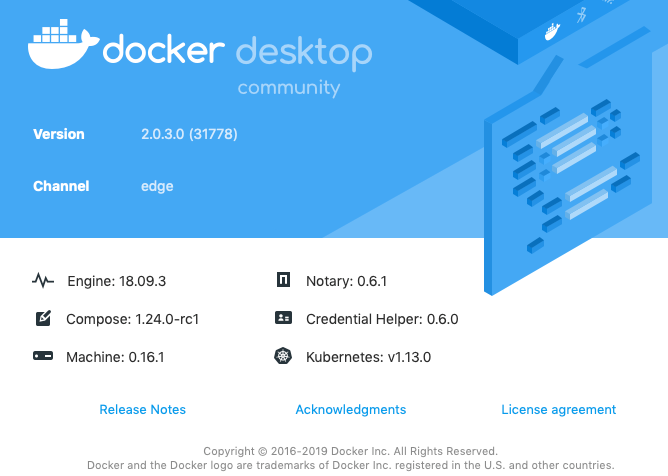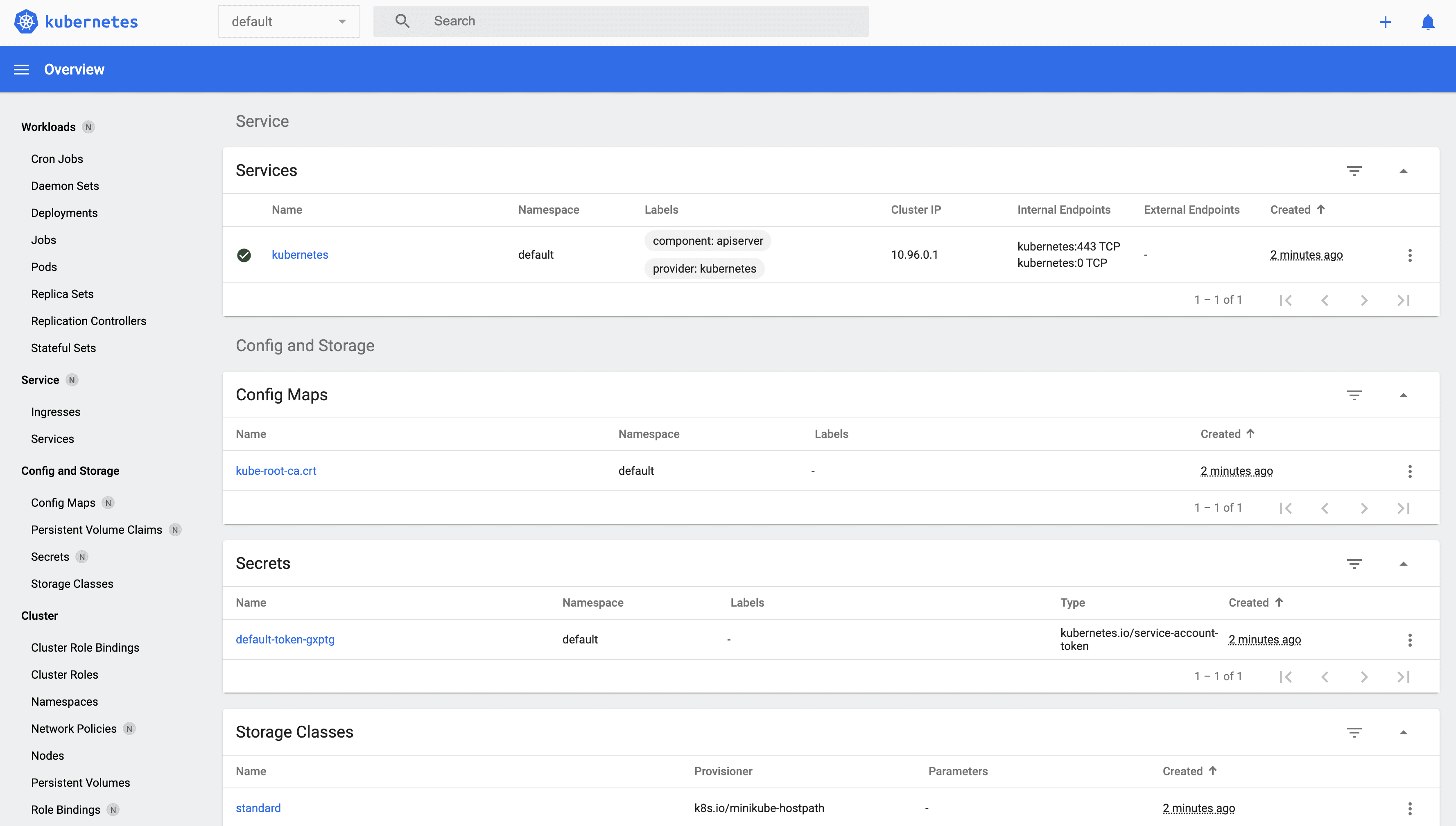- 1 Local Kubernetes setup with minikube on Mac OS X 2 Internal and external connectivity in Kubernetes space Kubernetes, container registry, Helm Minikube is ideal tool to setup Kubernetes (k8s from now on) locally to test and experiment with your deployments.
- For example, if you are intending to run a Kubernetes cluster on your laptop (locally), you will need a tool like Minikube to be installed first and then re-run the commands stated above. If kubectl cluster-info returns the url response but you can't access your cluster, to check whether it is configured properly, use.
- Dnf install docker. Docker for Windows. Kubectl v1.15.0. Brew install stern. Start -platform minikube Verify Kubernetes API.OK 👀 Looking for an already existing Che instance Verify if Che is deployed into namespace 'che'.it is not ️ Minikube preflight checklist Verify if kubectl.
Minikube is ideal tool to setup Kubernetes (k8s from now on) locally to test and experiment with your deployments.
Like kind, minikube is a tool that lets you run Kubernetes locally. Minikube runs a single-node Kubernetes cluster on your personal computer (including Windows, macOS and Linux PCs) so that you can try out Kubernetes, or for daily development work. You can follow the official Get Started! Guide if your focus is on getting the tool. Steps to reproduce the issue: minikube start -vm-driver hyperv -hyperv-virtual-switch 'Primary Virtual Switch' Full output of failed command:
In this guide I will try to help you get it up and running on your local machine, drop some tips on where and how particular stuff should be done and also make it helm capable (I assume when you use k8s that at some point you will want to learn about and use Helm, etcd, istio etc).
This is your local k8s environment scaffolding guide.
Minikube installation
Minikube works with virtual machine, and for this it can use various options depending on your preference and operating system. My preference in this case is Oracle’s VirtualBox.
You can use brew to install everything:
In this case you could get some kind of inconclusive installation error related to virtualbox installation, especially on Mojave and probably everything afterwards.
Whatever it says, it is most probably a new security feature in MacOS X that is in your way.
Go to System Preferences > Security & Privacy and on General screen you will see one (or few) messages about some software needing approval to install. You should carefully review the list if there is more than one and allow installation of software you need — in this case software by Oracle.
After that is done you can re-run the command above and when it is done you should be ready for next steps.
Running and accessing the cluster
Starting it would be as easy as
In order to optimally utilize your local machine’s resources I would suggest stopping it when you do not need it any more… With VirtualBox in center of it, it will go through you laptop’s battery pretty quickly.
Starting it again later will get you back where you left off:
Kubernetes dashboard is also available to you (while minikube is running):

I will assume you have kubectl installed locally and that you are already using it for some remote clusters so you got multiple contexts. In this case, you need to list contexts and switch to minikube one (in following commands assuming default name that is, ofc, “minikube”)
Now you are in the context of your local k8s cluster that runs on minikube and you can do all the k8s things in it.
Ingress controller
To run your deployments that have ingress (and I assume most of them will), you will need ingress add-on:
Make sure that you setup ingress based on your local hosts. It basically means that whatever you set as host in your ingress rules needs to be set up in your /etc/hosts file:
Where “[minikube ip]” should be replaced with actual minikube ip. It also works with multiple, space separated local hosts after minikube ip.
Here is shortcut to do it in bash:
Container registry — i.e. Docker registry
Reality of the real container registry usage in local environment is a rough one, so I will provide easy, quick and dirty option that makes it quite easy to deploy your local work to your local k8s, but deprives you of really important experience of using proper container registry.
Local container registry
Minikube Windows 10
Get your local docker context to point to minikube context:
To revert: $ eval $(docker-machine env -u)

When in minikube context, to start local docker registry:
Uninstall Minikube Mac
So, now you have local registry to push stuff to (as long as your docker is in context of minikube).

You can now do:
At this point you can use localhost:5000/: as image in your deployment and that is it.
Using remote container repo
To use remote container repo locally you need to provide way to authenticate, which is through k8s secrets.
For local secrets management for ECR, GCR and Docker registry I recommend using minikube addon called registry-creds. I do not consider it safe enough to be used anywhere but in local env.
Note on ECR setup: Make sure that, if you are setting it for AWS ECR, and you do not have role arn you want to use (you usually wont have and it is optional), you set it as something random as “changeme” or smt… It requires value, if you just press enter (since it is optional) deployment of creds pod will fail and make your life miserable.
Minikube Mac Os
In case of AWS ECR, that will let you pull from your repo directly setting url as container image and adding pull secret named awsecr-cred:
I have to note here that running this locally worked quite chaotically for me and every session was new experience and new hack to make it work… Not a happy path.
Helm
Helm is package manager for k8s, and is often used for configuration management across deployments. With high popularity of the tool and raising adoption, I want to end this guide with the note about adding helm to your local k8s env.
It is quite easy at this point, just have minikube up and:
Minikube Update
This should be deprecated information pretty soon, but in current case helm uses backend called Tiller and that is what gets installed/deployed during helm init execution.
You should check tiller deployment with: $ kubectl describe deploy tiller-deploy — namespace=kube-system
Valuable read:https://docs.helm.sh/using_helm/